How to Install Crown Molding on Cabinets
Adding crown molding makes a big visual impact and adds a layer of sophistication to boring cabinets. You use the same methods for cutting the crown molding as I show you in my Crown Molding Templates tutorial – or the DIY Crown Molding Cutting Jig post. Now I’m going to show you how to install crown molding on cabinets and built-ins.
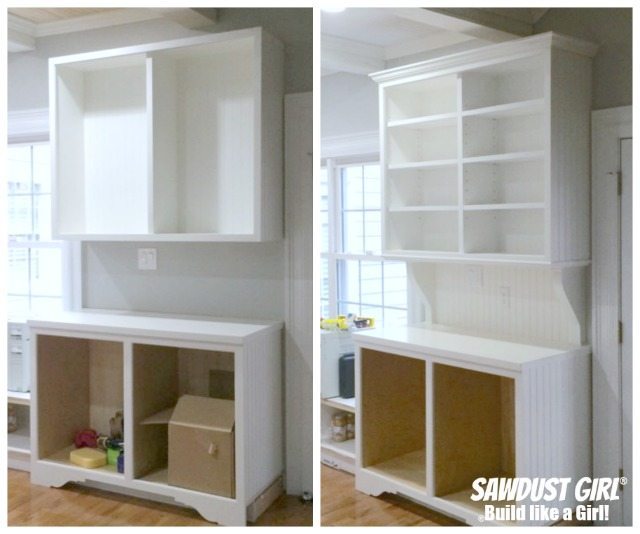
How to Install Crown Molding on Kitchen Cabinets
Use a straight edge to mark where the bottom of the crown moulding will sit on the cabinet face-frame. Mark all sides of the cabinet onto which you will be attaching crown molding.
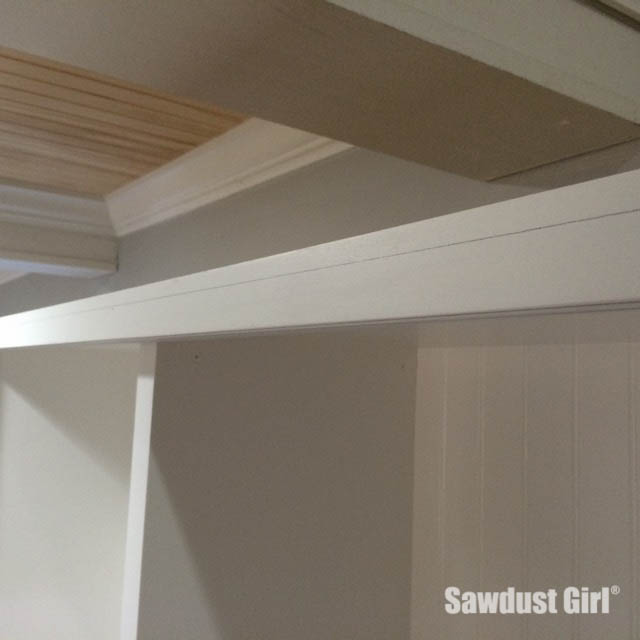
Fill Gaps
If the face-frame extends past the side of the cabinet (as most do), fill the gap with a piece of scrap wood (that is the same thickness as the gap). You can install the scrap so it’s bottom edge is lined up with either: the faceframe – or
The side of the cabinet must be flush with the side of the faceframe for the crown moulding corner to be square.
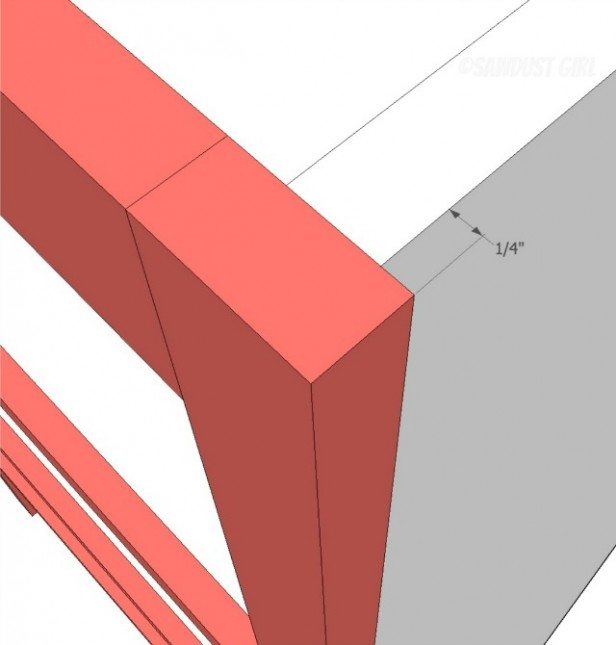
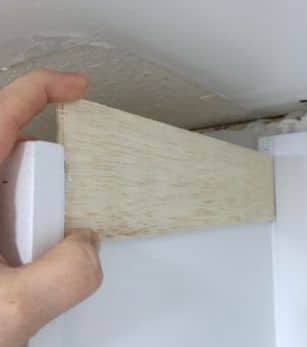
Use whatever scrap you have handy. I used a paint stir stick on my China hutch. The filler strip should not extend below the bottom line mark.
Add nailer block
If there is not a large area of cabinet sides and face-frame (above your crown bottom line) it will be difficult to attach the crown moulding with nails because you angle the nails up, often missing the cabinet/faceframe all together. If you secure a block of wood around the perimeter at the top of the cabinet it will give you a surface into which you can shoot the nails and secure the crown moulding.
Measure and Cut
Measure and cut ALL pieces of crown before nailing any to the cabinet. I find that holding the piece of crown moulding up to the cabinet and marking where it needs to be cut is far more effective than trying to measure the cabinet with a measuring tape and transferring that measurement to the crown moulding.
To do this, cut pieces of crown moulding that are generously longer than each piece needs to be – giving you enough to work with but allowing you to work with manageably sized pieces.
- Start with a side piece. Hold the straight end against the wall and mark where the crown molding exits the cabinet.
- Measure and mark the opposite side piece in the same way.
- Cut both pieces.
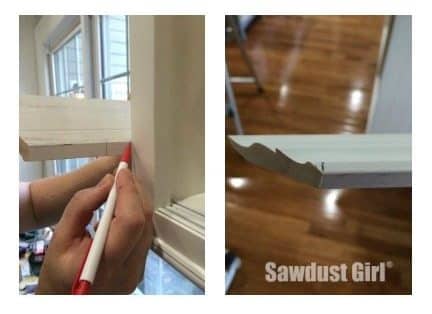
Make yourself a set of templates from my cutting guide for easy reference how to cut each side or each
- For the center piece, cut the right end and then hold it in place with a piece of painters tape while you mark the other end to ensure you get an exact measurement.
Dry fit
Once all pieces are cut, use painters tape to hold your pieces in place while you make sure they are all the right length and the corners close up tight. Crown has an irritating way of lining up perfectly and then suddenly NOT being the right size AFTER you’ve driven a few nails into it. I like to give it a little test drive before I make the nail hole commitment.
Glue and Nail
Once you’re happy with the dry fit, apply CA or wood glue to the corners and start nailing the crown onto the cabinet.
- Start on one side of the cabinet and work your way around.
Now fill nail holes, caulk and paint. The caulk is especially important if you had a gap on the sides that you filled in with a spacer (like my paint stick). After
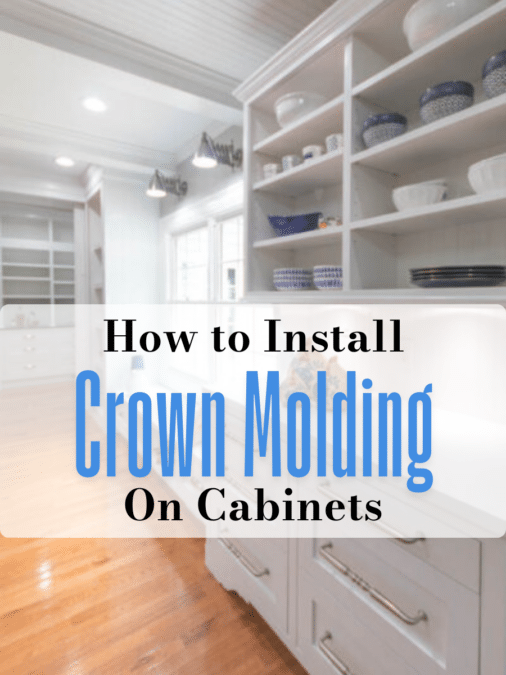
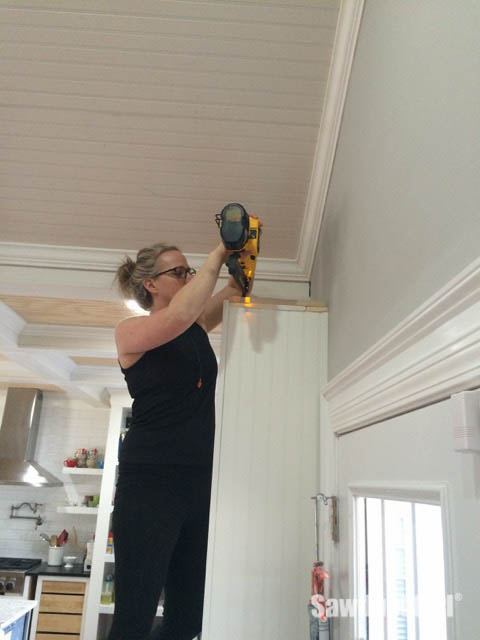
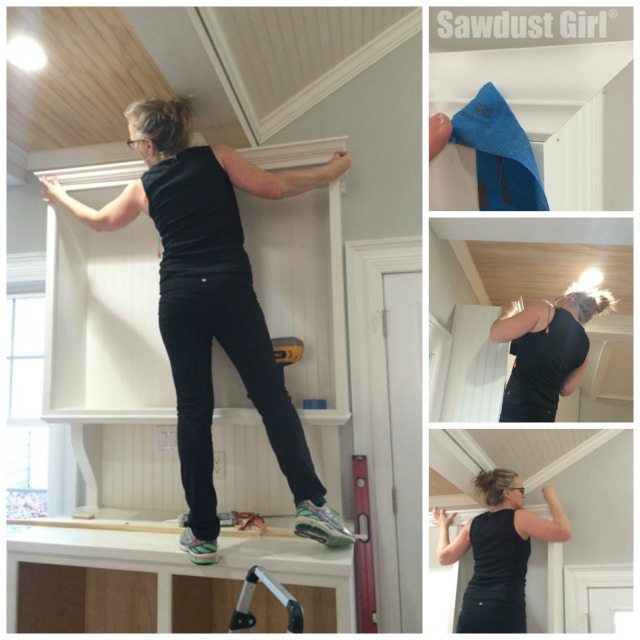

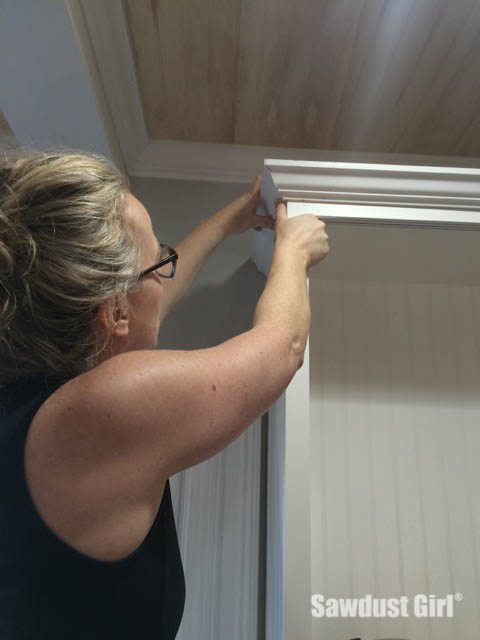
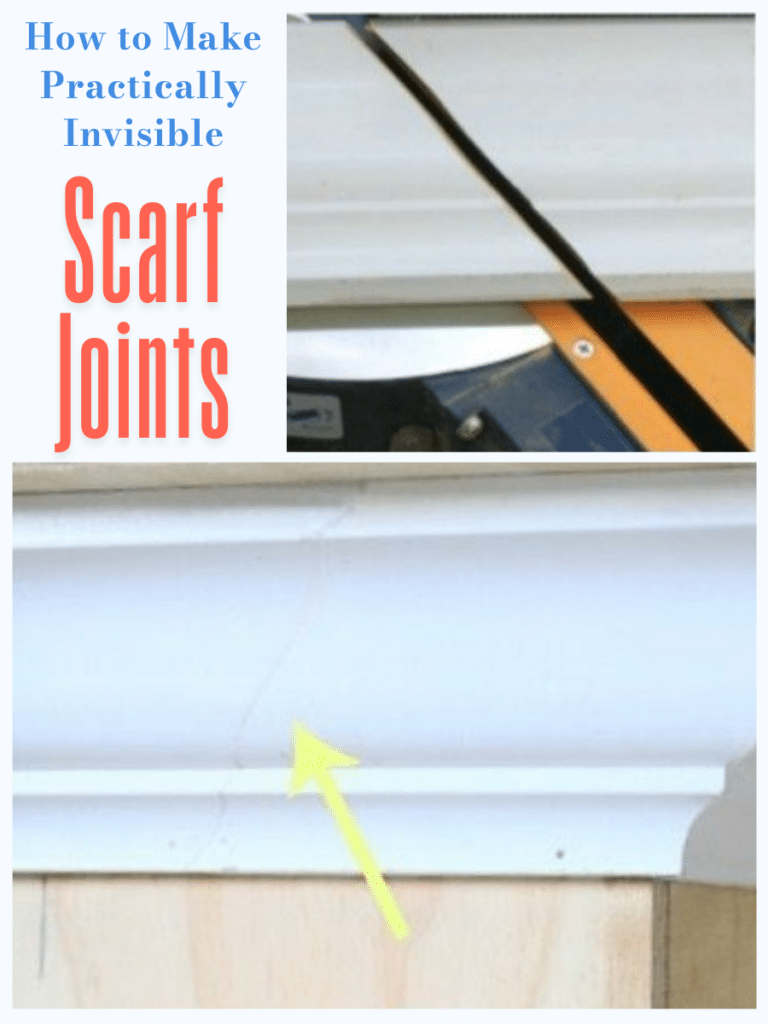
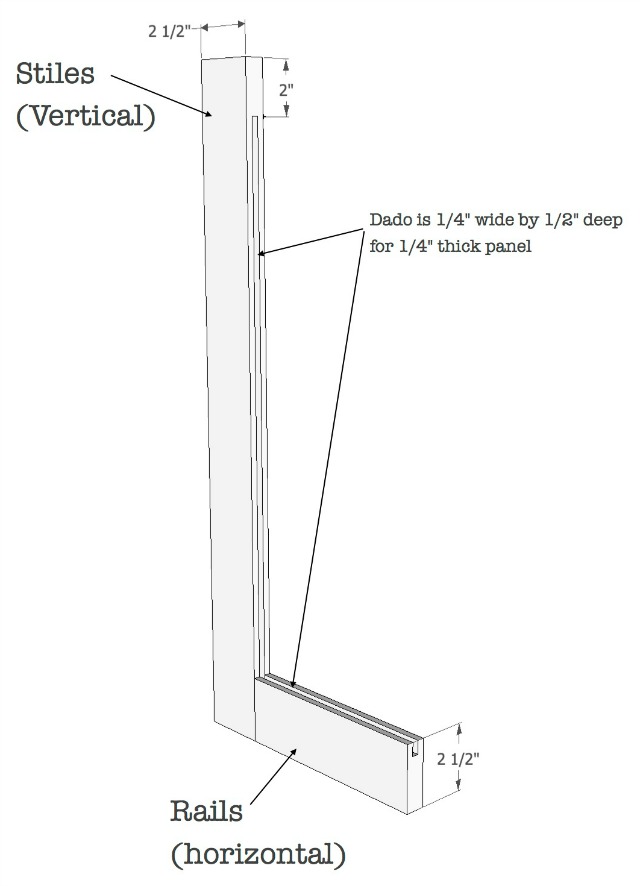
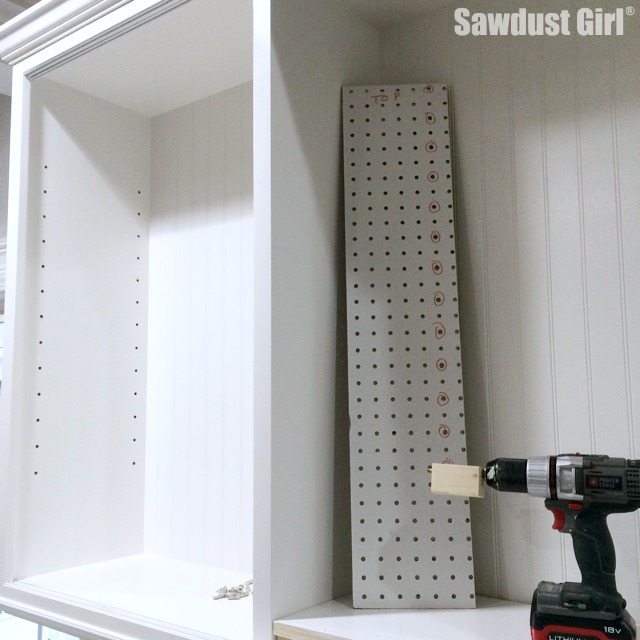
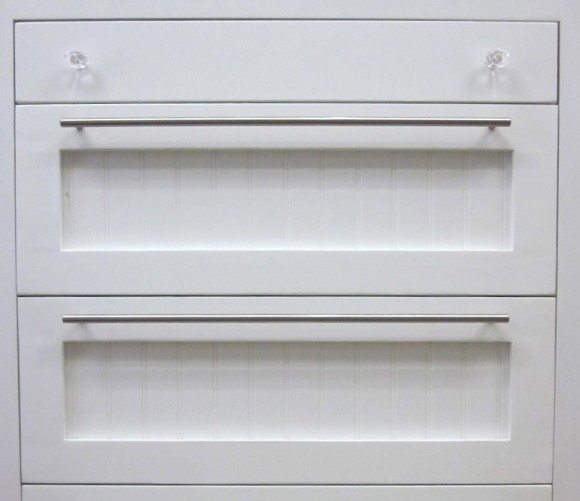
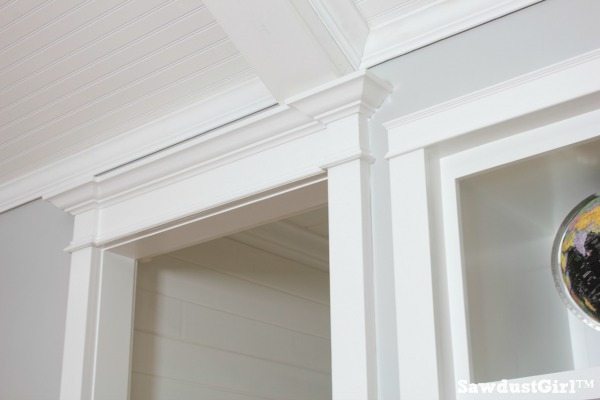
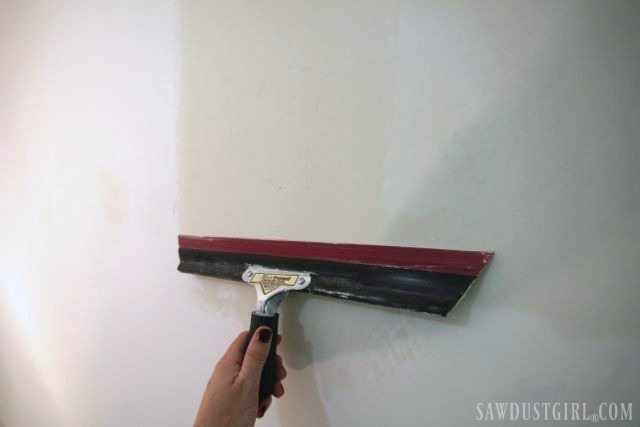
I have a compoud mitre saw and can’t seem to find a table to help set the mitre and bevel angles for corner cabinets and regular 90% angle corners. I am trying to replace some missing pieces of an unfinished job by a contractor. The calculators seem to be made for ceiling crown mouldings and I can’t get my head around their measurements which seem to be based on the wall angle??? My mouldings don’t connect to the ceiling… I haven’t done this before and have used a protractor to figure out that the pieces have what is a 45 degree spring angle and if I have measured correctly the corner cupboards have a 22.5 degree angle on the corners but the calculators don’t seem to be built around the angle of the corner so am not sure where to go next.
That’s a very good idea!
If you add blocking above the cabinet it should give you something to nail into and you should be able to go crazy with some crown! I would place the bottom of the crown just slightly below the top of the actual cabinet so it hides the fact that there isn’t any more cabinet above it and it’s just blocking supporting that crown. Make sense?
Well… a: I didn’t want to drag my air compressor upstairs and my 16 ga nailer did just fine. b: Maybe, maybe not. On a wall, yes. On a cabinet that is made of plywood? I nail through the joint and it’s not going to get bumped, there won’t be an issue of movement/shrinkage/expansion, etc. I’ve never had my corners come apart on kitchen cabinets so “always” sometimes doesn’t apply. 😉
A: you should have used a Pin Nailer instead of that big nail gun and B: Alway gule your outside corners or they will come apart in the future.